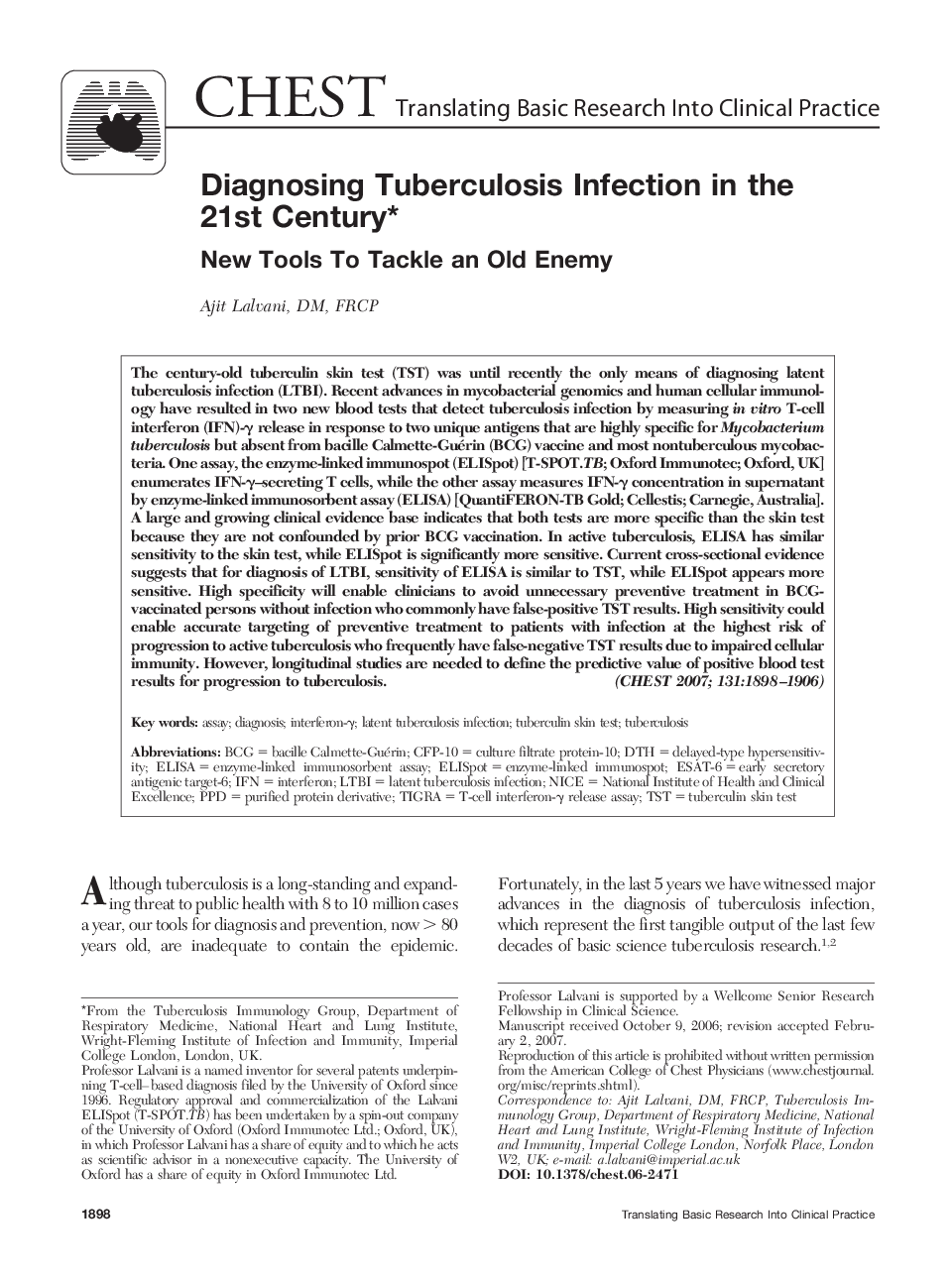| Article ID | Journal | Published Year | Pages | File Type |
|---|---|---|---|---|
| 2906527 | Chest | 2007 | 9 Pages |
The century-old tuberculin skin test (TST) was until recently the only means of diagnosing latent tuberculosis infection (LTBI). Recent advances in mycobacterial genomics and human cellular immunology have resulted in two new blood tests that detect tuberculosis infection by measuring in vitro T-cell interferon (IFN)-γ release in response to two unique antigens that are highly specific for Mycobacterium tuberculosis but absent from bacille Calmette-Guérin (BCG) vaccine and most nontuberculous mycobacteria. One assay, the enzyme-linked immunospot (ELISpot) [T-SPOT.TB; Oxford Immunotec; Oxford, UK] enumerates IFN-γ–secreting T cells, while the other assay measures IFN-γ concentration in supernatant by enzyme-linked immunosorbent assay (ELISA) [QuantiFERON-TB Gold; Cellestis; Carnegie, Australia]. A large and growing clinical evidence base indicates that both tests are more specific than the skin test because they are not confounded by prior BCG vaccination. In active tuberculosis, ELISA has similar sensitivity to the skin test, while ELISpot is significantly more sensitive. Current cross-sectional evidence suggests that for diagnosis of LTBI, sensitivity of ELISA is similar to TST, while ELISpot appears more sensitive. High specificity will enable clinicians to avoid unnecessary preventive treatment in BCG-vaccinated persons without infection who commonly have false-positive TST results. High sensitivity could enable accurate targeting of preventive treatment to patients with infection at the highest risk of progression to active tuberculosis who frequently have false-negative TST results due to impaired cellular immunity. However, longitudinal studies are needed to define the predictive value of positive blood test results for progression to tuberculosis.
